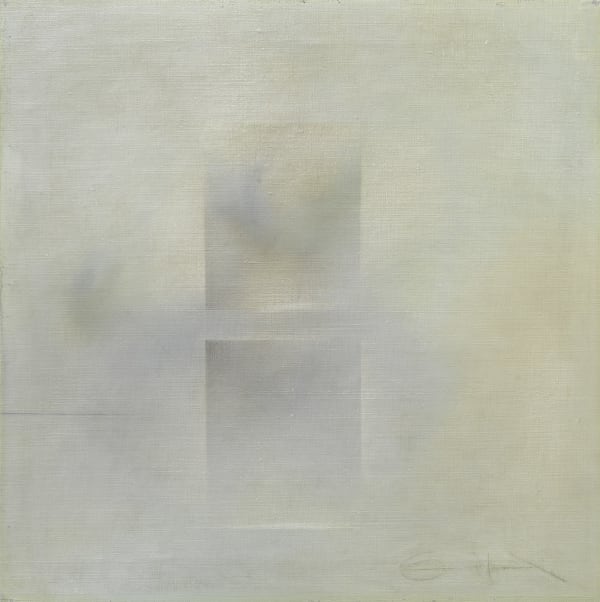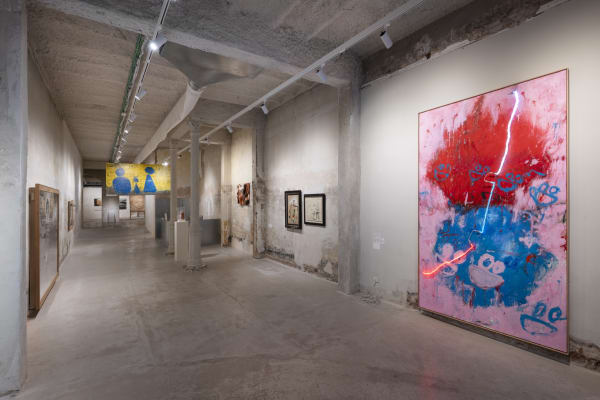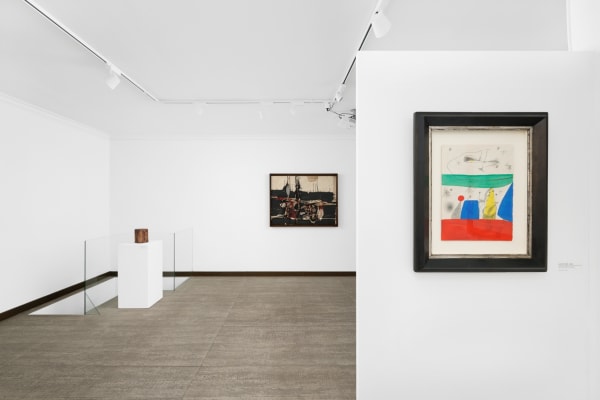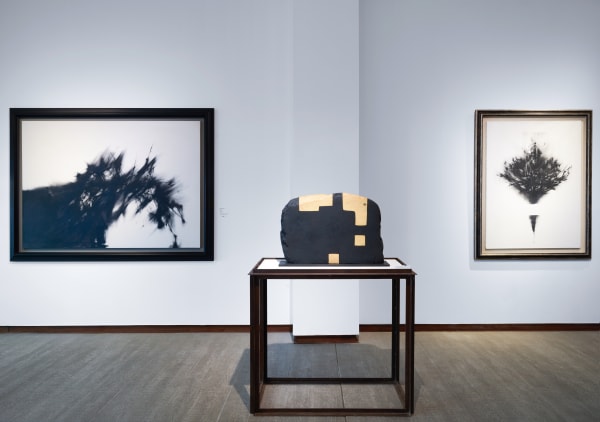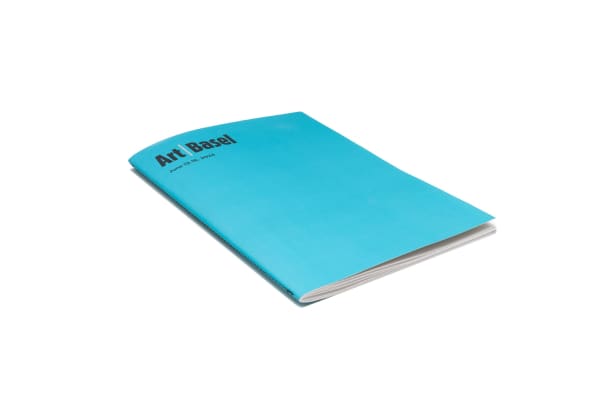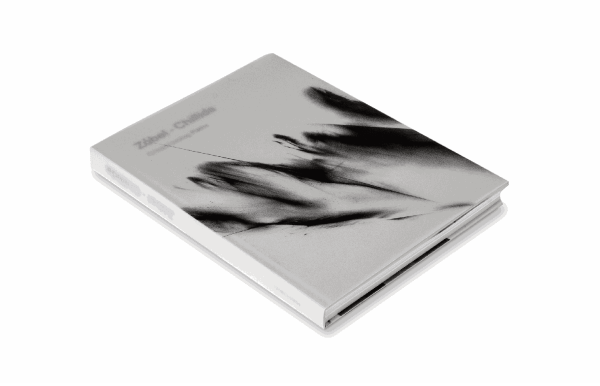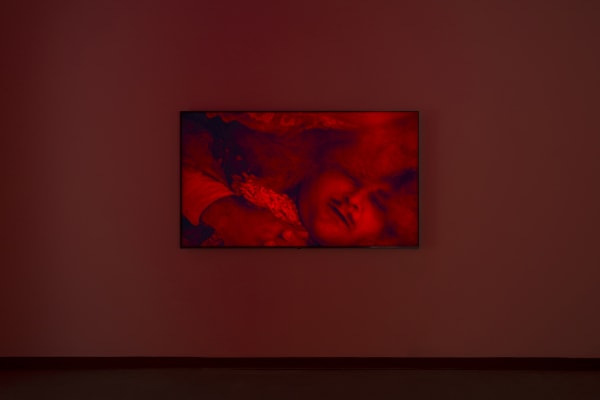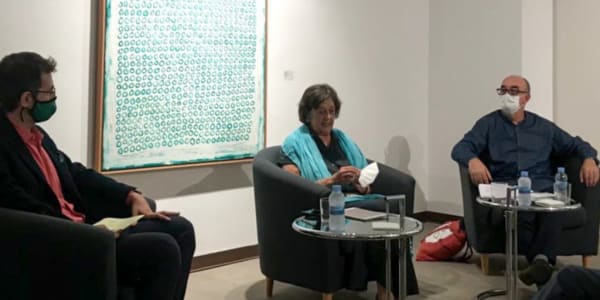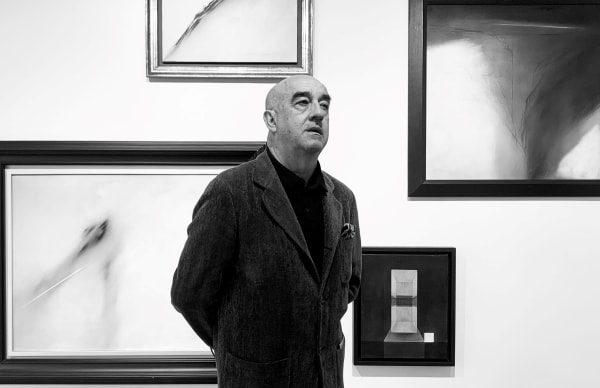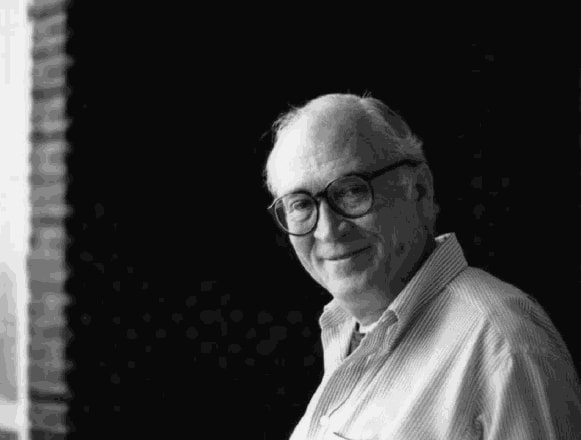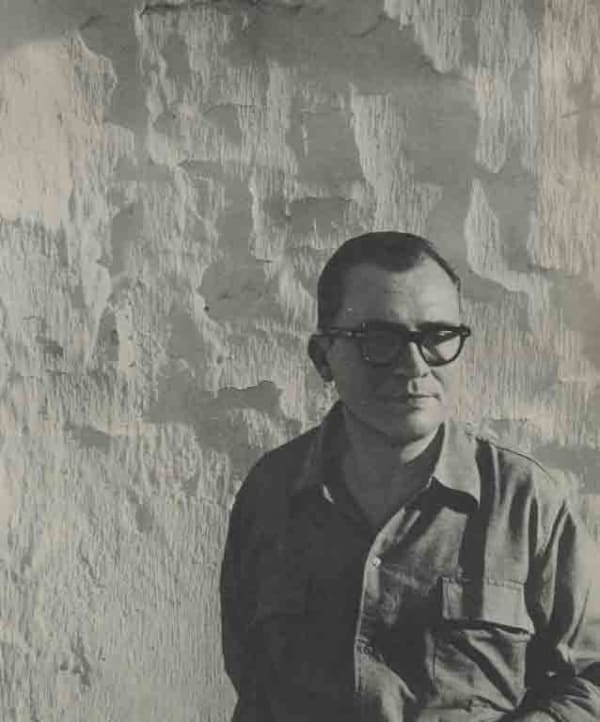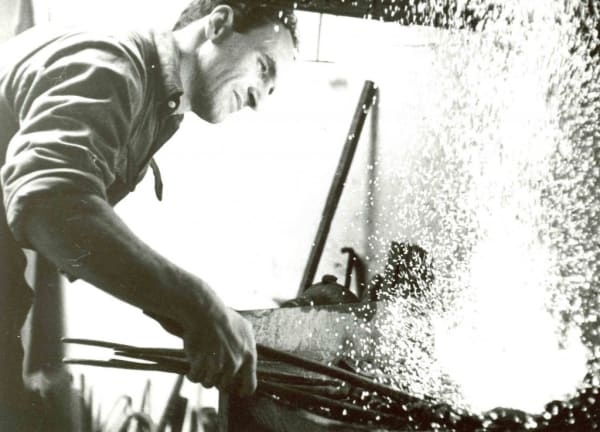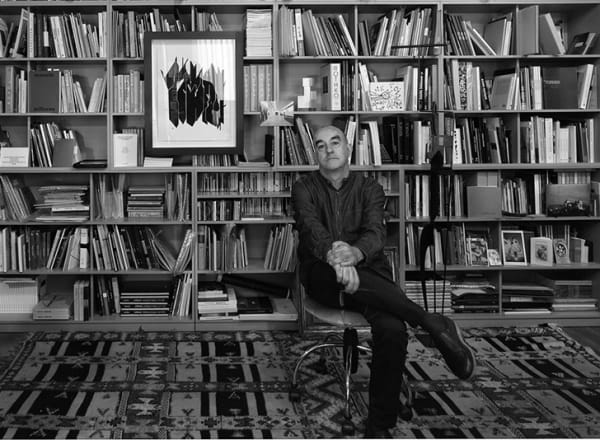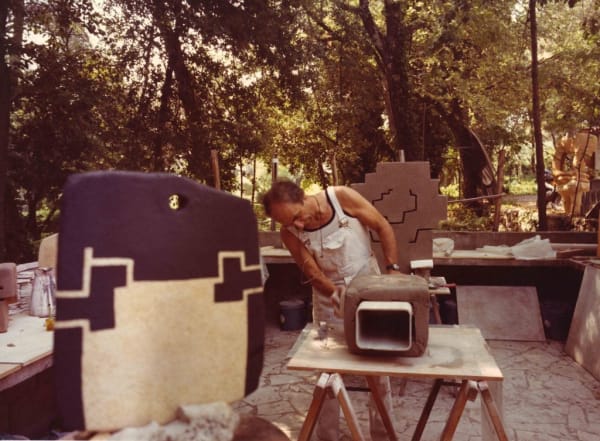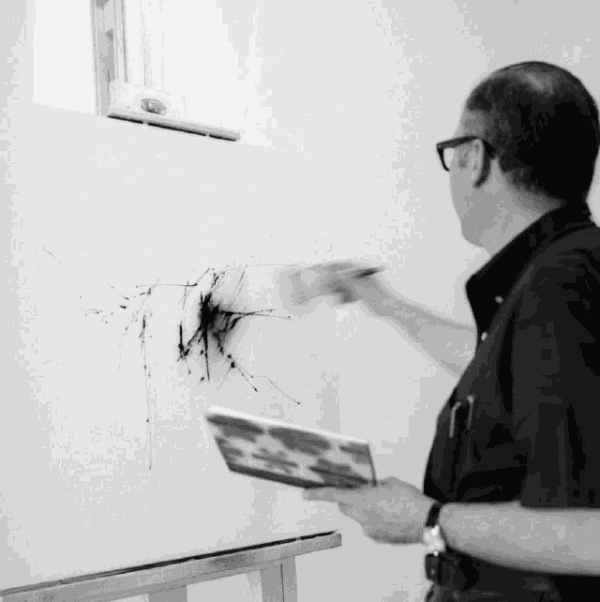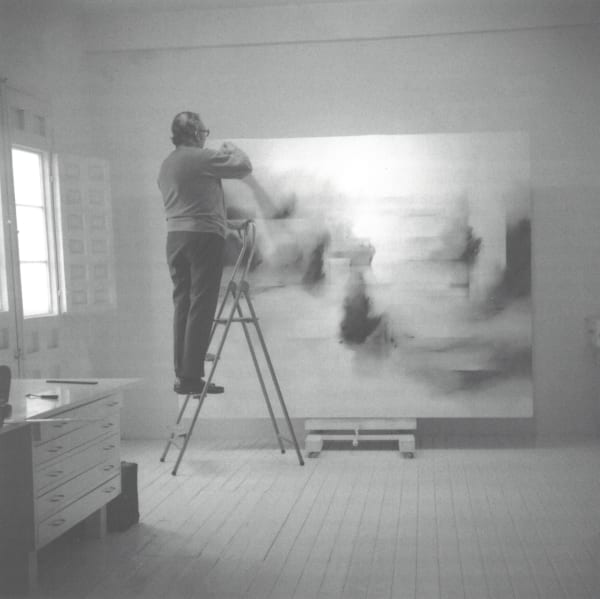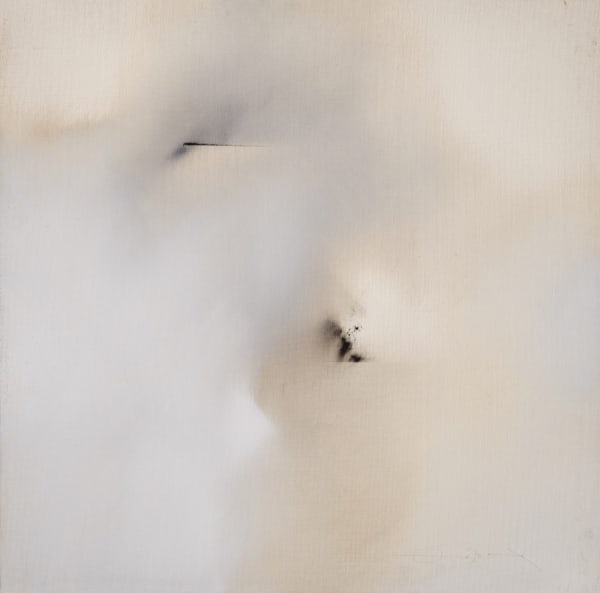Fernando Zóbel Manila, 1924-Rome, 1984
“As I paint, I eliminate all that is superfluous. My paintings are, I believe, quite simple: I don’t want them to contain anything that might be distracting.”- Fernando Zóbel
Fernando Zóbel was an unrepentant traveler, between Europe, America and the East, with a clear vocation to create currents and unite cultures, in addition to the many facets that come together in his personality and that were developed by him throughout his life: historian, patron, professor of University, bibliophile, collector, creator and founder of the Museum of Spanish Abstract Art in Cuenca and the founding director of the Ayala Museum in Philippines. Activities, all of them, endowed with a great intellectual load, that shaped his extraordinary personality, and that never implied a dispersion of the person, as it could have happened, but all of them were united under the common denominator of the great vocation of him: painting. His masterpieces, such as the "Saetas" series, showcased his exceptional skill in fusing Western abstraction with Filipino sensibilities.
-

RADICALLY UNIQUE, RADICALLY DIFFERENT
Barcelona 21 Nov 2024 - 15 Feb 2025If we champion difference rather than homogeneity, the 20th century appears to be a sequence of irreconcilable personalities. So unique that nothing links them. We could say that the systematic...Read more -

La radicalité à l'oeuvre
PARIS 6 Jun - 21 Aug 2023Mayoral is delighted to announce its summer group exhibition, showcasing a selection of works by post-war artists who, in their individual ways, embraced a radical approach in their creative processes:...Read more -

Zóbel. An Artist From Three Continents
PARIS 19 May - 16 Jun 2022The seven works by Fernando Zóbel (b. Manila, 1924 – d. Rome, 1984), assembled for this exhibition are characteristic evocations of nature and a clear reflection of the meticulous, cerebral...Read more -

Abstract Nature
BARCELONA 2 Oct - 20 Nov 2021Mayoral presents an exhibition which highlights the role of the landscape in the work of Fernando Zóbel linked to three great Catalan postwar abstract artists who were also particularly sensitive...Read more
-

Zóbel and the Great Post-War Generation
MADRID 12 - 21 Mar 2021Mayoral’s first exhibition in Madrid, ‘Zóbel and The Great Post-War Generation’, will be held from the 11th to 21st March at the Fundación PONS. The exhibition brings together more than...Read more -

Zóbel-Chillida. Crisscrossing Paths
PARIS 12 Sep - 29 Oct 2020Mayoral presents the exhibition 'Zóbel-Chillida: Crisscrossing Paths' in their gallery in Paris. The exhibition will be a dialogue between two major post-war artists— Basque sculptor Eduardo Chillida (1924-2002) and Hispano-Philippine...Read more -

Zóbel-Chillida. Croiscrossing Paths
BARCELONA 25 Apr - 25 Jul 2019Mayoral is pleased to present Zóbel-Chillida: Croiscrossing Paths, an unprecedented dialogue between Fernando Zóbel and Eduardo Chillida. Curated by Alfonso de la Torre and with the collaboration of the artists’...Read more
-

Radically unique, radically different
Carles Guerra presents a great show that mixes the 20th and 21st centuries, with the occasion of the 35th anniversary of the Galeria Mayoral November 18, 2024Catalan version Spanish version Galeria Mayoral is celebrating 35 years devoted to modern and contemporary art. The brilliant artists from the most iconic avant-garde share...Read more -

ART BASEL 2024: THE BOOTH OF OUR DREAMS
A SELECTION OF 15 MASTERPIECES THAT REPRESENTED MAYORAL ON OUR LIFELONG DREAM. June 21, 2024When we were 7 and 5 years old respectively, our father, mother and older sister Cristina went to Basel for a few days: they told...Read more -

Fernando Zóbel. A secret Form of Viewing | Alfonso de la Torre
Alfonso de la Torre presents the exhibition "Zóbel. An Artist From Three Continents" at Galeria Mayoral, Paris May 28, 2022Zóbel, Fernando Zóbel, Galeria Mayoral, An artist from three continents, Alfonso de la TorreRead more -

Conversación entre Alfonso de la Torre y Elvira Maluquer con la participación de Jordi Mayoral (SPANISH)
Jordi Mayoral talks with Alfonso de la Torre and Elvira Maluquer on the exhibition "Abstract Nature" at Galeria Mayoral, Barcelona September 2, 2021Con motivo de la inauguración de la exposición «Naturaleza abstracta»: Jordi Mayoral (JM): Per a nosaltres és una alegria inaugurar l’exposició «Naturalesa abstracta» amb dues...Read more -

It’s all over, this is other art|Alfonso de la Torre
Alfonso de la Torre speaks about the «other art» concept on art introduced by «El Paso» on the occasion of the exhibition “Zóbel and the Great Post-War Generation” organised by Galeria Mayoral at the Fundación Pons in Madrid February 2, 2021IT’S ALL OVER, THIS IS OTHER ART by Alfonso de la Torre *Text written for the exhibition “Zóbel and the Great Post-War Generation” (11th-21st March...Read more -

Talk by Alfonso de la Torre on “Zóbel-Chillida. Crisscrossing Paths” (French)
The curator of “Zóbel-Chillida. Crisscrossing Paths” talks about the exhibition organised at Galeria Mayoral, Barcelona-Paris September 19, 2020Talk by Alfonso de la Torre, curator of the exhibition “Zóbel-Chillida. Crisscrossing Paths”. 16 September, 2020 (French)Read more -

Letters from Fernando Zóbel to Eduardo Chillida
A collection of letters from Eduardo Zóbel to Eduardo Chillida dated between 1964-1979. Published in the exhibition catalogue "Zóbel-Chillida. Criscrossing paths" May 20, 2019Letter from Fernando Zóbel of 17 September 1964 in which he expresses his satisfaction with their meeting in Cuenca and gives more detail on the...Read more -

Memory of Qualities | Patrick D. Flores
Epilogue by Patrick D. Flores on the occasion of the exhibition "Zóbel-Chillida. Crisscrossing Paths" at Galeria Mayoral, Barcelona-Paris May 19, 2019When Fernando Zóbel turned to abstraction sometime in the fifties, he thought of his newfound form as being shaped by memory. When probed by the...Read more -

Words and ways about the Eulogy of the Horizon and other public sculptures (1990) | Fernando Huici
Fernando Huici interviews Eduardo Chillida. Published in the catalogue "Zóbel-Chillida. Criscrossing paths " on the occasion of the exhibition at Galeria Mayoral, Barcelona-Paris May 15, 2019FH [Fernando Huici]: In any case, from an immediate contemplation of your piece, the illusion is that of a very strict geometry. EC [Eduardo Chillida]:...Read more -

An interview with Ignacio Chillida Belzunce and Fernando Zóbel de Ayala y Miranda | Alfonso de la Torre
Alfonso de la Torre interviews Ignacio Chillida Belzunce, the son of Eduardo Chillida, and Fernando Zóbel de Ayala y Miranda. Text Published in the exhibition catalogue "Zóbel-Chillida. Criscrossing paths" May 14, 2019The image of the artist nowadays Alfonso de la Torre [AT] : When I consider certain artists who are no longer with us, hoping to...Read more -

International Conference on Sculpture (August 1988) | Eduardo Chillida
Text of the lecture given by Eduardo Chillida at Trinity College, Dublin on the occasion of the International Conference on Sculpture on August 1998. Text Published in the exhibition catalogue "Zóbel-Chillida. Criscrossing paths " May 13, 2019Limits are the real protagonists of space, just as the present, another limit, is the real protagonist of time. The concept of place implies dimension...Read more -

Conversations with Fernando Zóbel | Rafael Pérez-Madero
Rafael Pérez-Madero interviews Fernando Zóbel, 1978. Published in the catalogue "Zóbel-Chillida. Criscrossing paths " on the occasion of the exhibition at Galeria Mayoral, Barcelona-Paris May 7, 2019RPM [Rafael Pérez-Madero]: In going over the critical literature of those days I notice that you are often classified among the informalistas (a rough equivalent...Read more -

In painting (1975) | Fernando Zóbel
Article "En la pintura" by Fernando Zóbel about his work Text published in the exhibition catalogue "Zóbel-Chillida. Criscrossing paths " May 6, 2019I believe that each painter paints in relation to what surrounds him, and what has always surrounded me is the History of Art, works of...Read more -

Zóbel-Chillida, a Meeting | Alfonso de la Torre
Alfonso de la Torre, curator of the exhibition "Zóbel-Chillida. Criscrossing paths " at Galeria Mayoral Barcelona-Paris , talks about the connections of Zóbel and Chillida during his life April 29, 2019[Like crisscrossing paths, the lives of Zóbel and Chillida intersected in the mid-sixties. In the fifties, with the two of them a long way from...Read more


